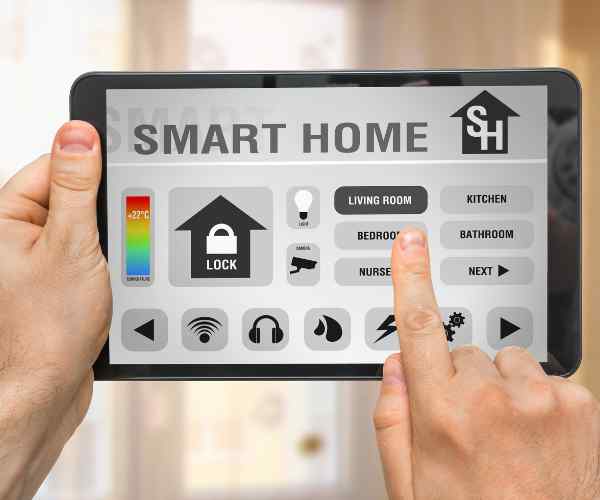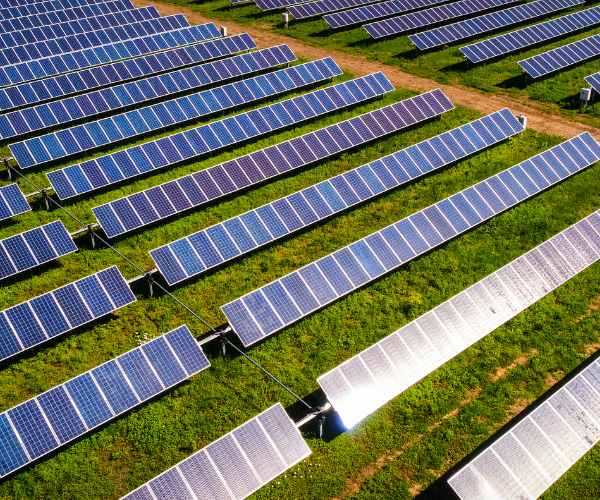Data centers, the backbone of our digital infrastructure, play a pivotal role in the technological landscape. These hubs of computing power, however, come with a substantial environmental impact that cannot be ignored. As the world increasingly relies on technology, a sustainable approach becomes imperative. This article delves into the realm of Green Data Centers, exploring how tech giants spearhead a shift towards environmentally friendly practices.
The Environmental Challenge
Current environmental issues associated with traditional data centers- Traditional data centers, characterized by their energy-intensive operations, contribute significantly to environmental degradation. These centers are notorious for their voracious appetite for electricity, leading to increased carbon emissions and strain on natural resources. Cooling systems, constant server operation, and outdated infrastructure collectively contribute to a substantial environmental footprint.

Carbon footprint and energy consumption concerns
The carbon footprint of data centers is a pressing issue, as the energy consumed translates directly into greenhouse gas emissions. The use of non-renewable energy sources exacerbates this problem. As technology advances and global data traffic surges, the industry faces the challenge of responsibly managing its energy consumption. This impacts the environment and poses long-term sustainability risks for the industry.
- Renewable Energy Integration: Tech giants are increasingly adopting renewable energy sources, such as solar and wind power, to fuel their data centers, reducing reliance on non-renewable resources.
- Energy-Efficient Designs: Innovations in server design, including low-power processors and advanced power management, are critical components of green data centers, optimizing energy usage.
- Cooling System Innovations: Green data centers employ cutting-edge cooling technologies, such as utilizing outside air or seawater, reducing the energy required to maintain optimal server temperatures.
- Collaborative Knowledge Sharing: Industry collaboration and knowledge sharing are crucial in overcoming challenges associated with transitioning to green practices fostering innovation and best practices.
- AI and Machine Learning Optimization: Artificial intelligence and machine learning technologies are harnessed to optimize energy efficiency by analyzing real-time data and predicting future workloads, enabling proactive energy management.
- Corporate Social Responsibility (CSR): Going green enhances corporate reputations, aligning with CSR goals and positioning tech giants as responsible stewards of the environment.
- Edge Computing Adoption: The trend towards edge computing minimizes the need for massive centralized data centers, inherently promoting energy efficiency and sustainability.
- Measurable Benefits: Companies transitioning to green data centers experience quantifiable benefits, including cost savings, reduced carbon footprints, and positive impacts on brand reputation.
- Incentive Utilization: Leveraging available incentives for sustainable practices helps offset initial capital investments and promotes a faster transition to green data center solutions.
- Continuous Innovation: The future of green data centers lies in constant innovation, with emerging technologies and strategies shaping the industry’s sustainable evolution.
The Rise of Green Data Centers
Green data centers represent a pivotal evolution in the tech industry’s approach to infrastructure. These centers prioritize energy efficiency, environmental responsibility, and sustainable practices. Unlike traditional counterparts, green data centers aim to minimize their carbon footprint and resource consumption. Key characteristics include integrating renewable energy sources, advanced cooling systems, and efficient server technologies.
Overview of sustainable technologies and practices
The transformation toward green data centers involves adopting innovative technologies and practices. Sustainable technologies encompass energy-efficient server designs, intelligent cooling systems, and the implementation of renewable energy sources such as solar and wind. Practices include waste heat reuse, server virtualization, and stringent energy management protocols. This holistic approach not only minimizes environmental impact but also enhances operational efficiency.
Tech Giants Leading the Way
Google’s commitment to 100% renewable energy
Google stands at the forefront of the green data center movement with its unwavering commitment to achieving 100% reliance on renewable energy. The company has invested heavily in solar and wind projects, ensuring that clean energy sources power its data centers. Google’s dedication extends beyond its operations, as it advocates for renewable energy adoption across the industry, setting a benchmark for sustainability.
Microsoft’s efforts in carbon neutrality and sustainability
Microsoft has taken a multifaceted approach to address its carbon footprint and promote sustainability. The company aims for carbon neutrality and has committed to being carbon-negative by 2030. Microsoft invests in renewable energy projects, supports research on carbon removal technologies, and implements energy-efficient designs in its data centers. Microsoft is shaping a future where technology and environmental stewardship coexist through these initiatives.
Amazon Web Services (AWS) and its initiatives for eco-friendly data centers
Amazon Web Services, a giant in cloud computing, recognizes its responsibility to minimize its environmental impact. AWS is dedicated to achieving 100% renewable energy usage and has set ambitious goals to reduce its carbon footprint. The company invests in wind and solar projects globally and continuously innovates its data center designs to optimize energy efficiency. AWS’s commitment reflects a broader industry trend towards eco-friendly practices, setting the standard for sustainable cloud infrastructure.
Innovations in Sustainable Infrastructure
Advancements in energy-efficient server designs
The journey toward green data centers involves fundamentally rethinking server designs to optimize energy consumption. Tech companies invest heavily in developing energy-efficient servers that deliver high-performance computing while minimizing power requirements. Innovations such as advanced power management, low-power processors, and optimized hardware configurations contribute to significant reductions in energy consumption without compromising computational capabilities.
Utilization of renewable energy sources and smart grid technologies
Green data centers increasingly rely on renewable energy sources to power their operations. Solar, wind, and hydroelectric power, among others, are harnessed to replace or supplement traditional energy grids. Furthermore, the integration of smart grid technologies enhances the efficiency of energy distribution and consumption. These technologies enable data centers to adapt to real-time energy availability, reducing reliance on non-renewable sources during peak demand.
Impact on the Bottom Line
Cost savings associated with green data center practices-Contrary to the misconception that sustainability comes at a higher cost, green data center practices often result in substantial cost savings. Energy-efficient designs reduce electricity bills and decrease the need for extensive cooling systems. Integrating renewable energy sources, while requiring initial investment, offers long-term stability and protection against volatile energy prices. Technological advancements also contribute to overall operational efficiency, reducing operating costs.
Positive effects on brand reputation and corporate social responsibility
Beyond cost considerations, adopting green data center practices has far-reaching effects on a company’s brand reputation and corporate social responsibility (CSR). Consumers and stakeholders increasingly value environmentally conscious businesses. Tech giants enhance their image as responsible corporate citizens by actively participating in sustainability initiatives. This positive perception can lead to increased customer loyalty, improved investor relations, and a competitive edge in a market that places a growing emphasis on ethical business practices.
Overcoming Challenges
Addressing common challenges in implementing green data center solutions
While the shift towards green data centers is promising, it comes with challenges. One common obstacle is the initial capital investment required for upgrading infrastructure and implementing sustainable technologies. Companies need help retrofitting existing data centers to meet green standards without disrupting operations. Addressing these financial and operational hurdles involves meticulous planning, phased implementation, and leveraging available incentives for sustainable practices.
Industry collaboration and knowledge sharing
Overcoming challenges requires a collective effort. The tech industry increasingly recognizes the importance of collaboration and knowledge sharing in driving sustainability initiatives. Forums, conferences, and partnerships provide platforms for companies to share best practices, discuss challenges, and collectively work toward innovative solutions. This collaborative approach fosters an environment where the industry’s collective intelligence contributes to overcoming shared hurdles and accelerating the transition to green data centers.
Case Studies
Specific examples of companies successfully transitioning to green data centers
- Google’s Data Center in Hamina, Finland: Google’s data center in Hamina is a shining example of a successful transition to green practices. Powered entirely by renewable energy, the facility utilizes seawater for cooling, minimizing environmental impact. Implementing innovative technologies, such as machine learning for energy optimization, showcases Google’s commitment to sustainability.
- Microsoft’s Project Natick: Microsoft’s underwater data center experiment, Project Natick, exemplifies the company’s innovative approach to sustainability. Submerged off the coast of Scotland, this self-contained data center is powered by renewable energy and demonstrates the potential for energy-efficient cooling in unconventional environments.
Measurable environmental and economic benefits
- Google’s Carbon Neutral Achievement: Google, through its sustained efforts in utilizing renewable energy, achieved carbon neutrality for its global operations. This accomplishment demonstrates the feasibility of green data center practices and showcases the measurable impact on reducing carbon emissions.
- Amazon Web Services (AWS) Renewable Energy Projects: AWS’s commitment to renewable energy is backed by numerous projects worldwide. For example, their wind and solar projects have generated millions of megawatt-hours of clean energy. These initiatives contribute to environmental conservation and result in significant economic benefits through reduced energy costs.
Future Trends
Emerging technologies and strategies in sustainable data centers
As technology continues to evolve, innovative technologies and strategies will shape the future of green data centers. One emerging trend is the development of more efficient energy storage solutions, allowing data centers to manage fluctuating energy demands better and further reduce reliance on traditional power grids. Additionally, advancements in hardware design, such as using materials with lower environmental impact, contribute to the overall sustainability of data center infrastructure.
Another notable trend is the exploration of edge computing. By decentralizing data processing and storage, edge computing reduces the need for massive centralized data centers, inherently promoting energy efficiency. This shift towards edge computing aligns with sustainability principles, as it minimizes energy-intensive data transfers over long distances.
The role of artificial intelligence and machine learning in optimizing energy efficiency
Artificial intelligence (AI) and machine learning (ML) are poised to be pivotal in optimizing energy efficiency within data centers. These technologies can analyze vast amounts of data in real time, allowing for dynamic adjustments in power consumption based on demand patterns. AI-driven predictive analytics can forecast future workloads, enabling proactive energy management and reducing unnecessary resource consumption.
Machine learning algorithms can also enhance cooling system efficiency by predicting optimal settings based on historical data and environmental factors. This intelligence level optimizes energy usage and contributes to the overall resilience and sustainability of data center operations.
Why are tech giants transitioning to green data centers?
Tech giants are transitioning to green data centers primarily to address the environmental impact of their operations. Traditional data centers have been known for their high energy consumption and carbon footprint. By adopting green practices, these companies aim to reduce their environmental impact, decrease reliance on non-renewable energy sources, and contribute to global sustainability efforts. Additionally, the transition to green data centers aligns with corporate social responsibility goals and enhances the companies’ reputations as environmentally conscious entities.
What initiatives are tech giants taking to make their data centers more environmentally friendly?
Tech giants are implementing various initiatives to make their data centers more environmentally friendly. Some key strategies include:
- Renewable Energy Adoption: Companies like Google, Microsoft, and Amazon Web Services (AWS) are investing heavily in renewable energy sources, such as solar and wind, to power their data centers.
- Energy-Efficient Designs: Tech companies focus on developing energy-efficient server designs, utilizing advanced hardware configurations, low-power processors, and optimized power management systems.
- Innovative Cooling Technologies: Green data centers are incorporating innovative cooling technologies to reduce the energy required for cooling servers, such as using outside air or seawater.
How do green data center practices benefit tech giants economically?
Green data center practices offer significant economic benefits to tech giants. These include:
- Cost Savings: Energy-efficient designs and the use of renewable energy contribute to substantial cost savings over time, reducing electricity bills and operational expenses.
- Brand Reputation: Embracing sustainability enhances corporate reputation, increasing customer loyalty and positive stakeholder relations. This, in turn, can positively impact a company’s market position and competitiveness.
- Long-Term Stability: Investing in renewable energy sources provides long-term stability by mitigating risks associated with fluctuating energy prices and future regulatory changes. Green practices contribute to the overall resilience of a company’s operations.
Conclusion
In conclusion, the journey towards green data centers represents a transformative shift in the tech industry, driven by a commitment to environmental sustainability. The positive impact of adopting green practices is multifaceted.
- Environmental Stewardship: Transitioning to green data centers reduces the tech industry’s carbon footprint, mitigating its contribution to climate change. Using renewable energy sources, energy-efficient designs, and innovative cooling technologies collectively contribute to a more environmentally responsible approach.
- Economic Benefits: Contrary to the misconception that sustainability comes at a high cost, green data center practices often lead to substantial cost savings. Companies investing in renewable energy sources and energy-efficient technologies experience long-term financial stability and resilience against volatile energy prices.
- Corporate Reputation and Responsibility: The commitment to green data centers enhances the corporate reputation of tech giants, fostering positive relationships with consumers and stakeholders. Embracing sustainability is a strategic business decision and a demonstration of corporate social responsibility, aligning with the values of a socially conscious global audience.






